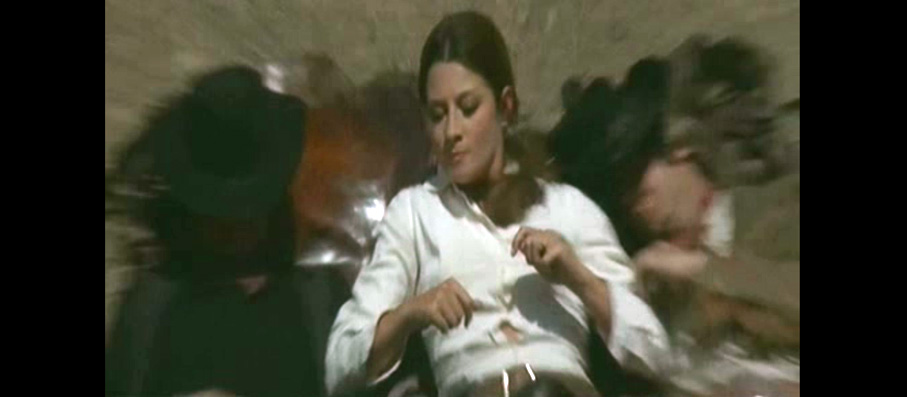This topic is broadly defined, given that “strong part” entails a plethora of female Spaghetti Western characters’ possible roles and functions, ranging from making a strong visual impact, e.g. bit parts for good-looking actresses, to actually being a film’s protagonist. The latter category comprises only a fistful of Euro-Westerns, among them Louis Malle’s Viva Maria ! (1965), Rudolf Zehetgruber and Sidney W. Pink’s Frauen, die durch die Hölle gehen / The Tall Women (1966), Siro Marcellini’s Lola Colt. Faccia a faccia con El Diablo (1967), Piero Cristofani and Lina Wertmüller’s Il mio corpo per un poker / The Belle Starr Story, Joaquín Luis Romero Marchent’s Fedra West, Gian Rocco’s Giarrettiera Colt (all 1968), Burt Kennedy’s Hannie Caulder, Christian-Jaque’s Les Pétroleuses (both 1971) and, more recently, Thomas Arslan’s Gold (2013) and Martin Koolhoven’s Brimstone (2016). Most of them already mentioned here or there.
Looking at the other end of the spectrum, special mention has to be made of Enzo G. Castellari’s Ammazzali tutti e torna solo (1968), a Western that avoids female characters altogether; the same can be said of Tonino Valerii’s Una ragione per vivere e una per morire (1972).
One of my favorite “strong” female roles in Italian Westerns is Rosalba Neri’s Agnes in Tonino Ricci’s Monta in sella, figlio di …! (1972).

